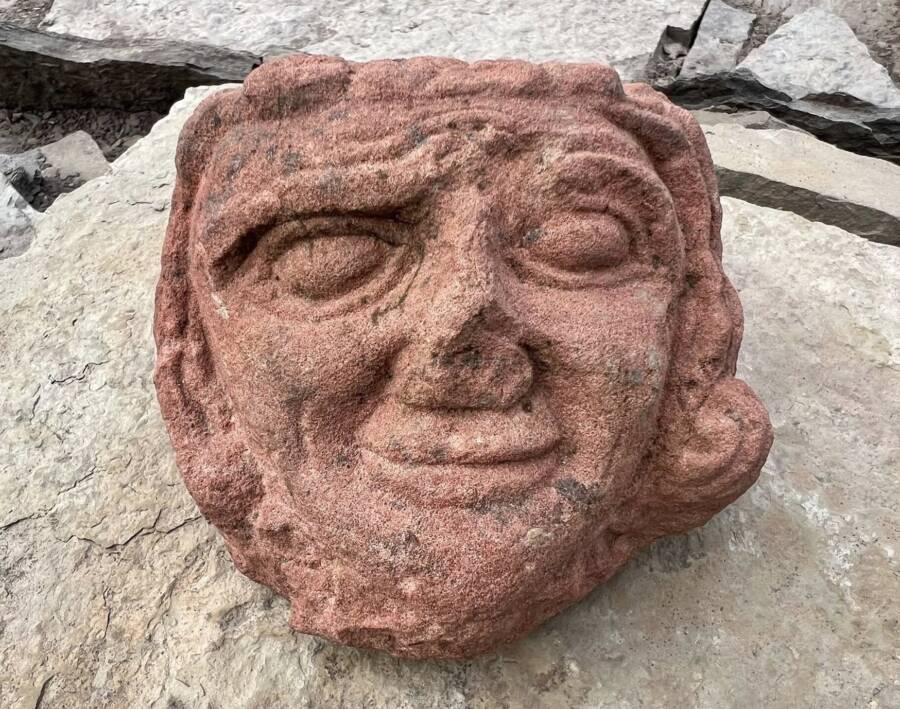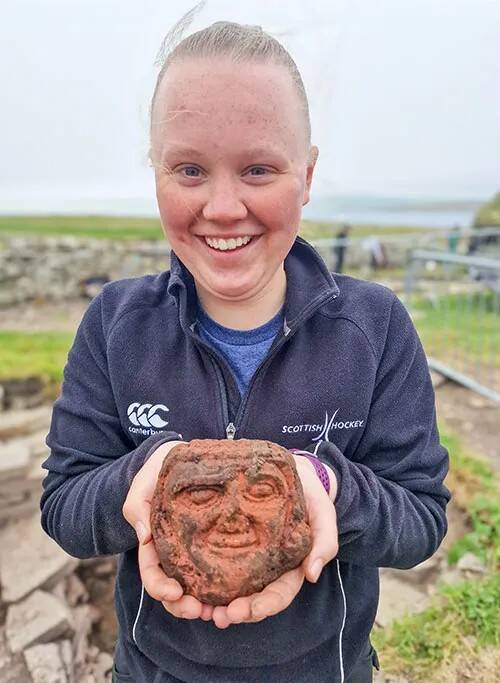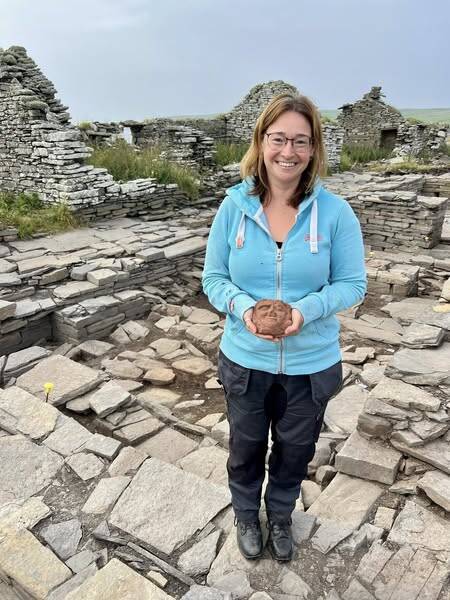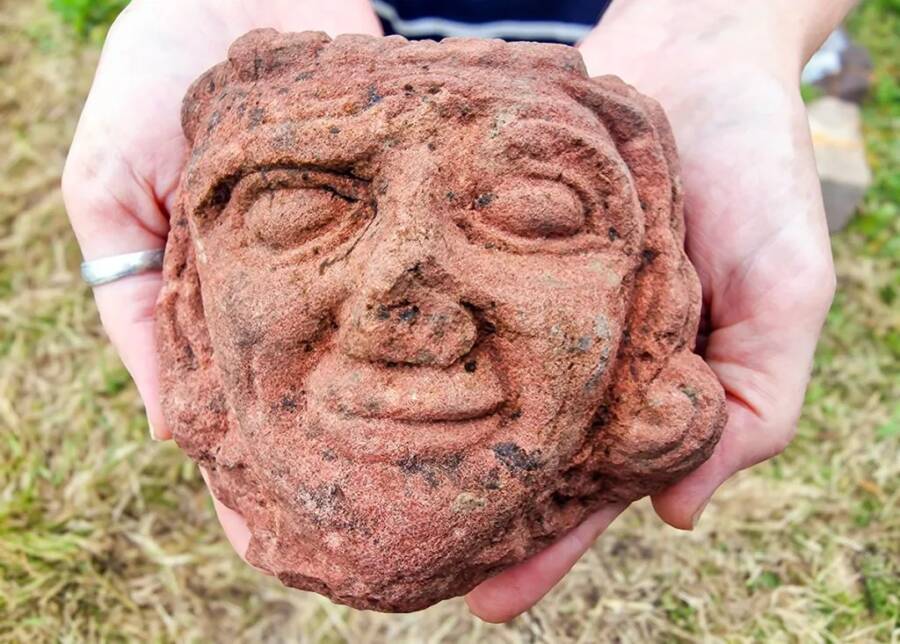Archaeology student Katie Joss found the 900-year-old carving at the historic Skaill Farm settlement on Rousay, one of Scotland's Orkney Islands that's known as the "Egypt of the north" due to its wealth of centuries-old treasures.

BBC Radio Orkney/FacebookThe carved stone head was discovered during excavation of a medieval building at Skaill Farm in Scotland’s Orkney Islands.
An archaeology student digging on Rousay in Scotland’s Orkney Islands recently discovered a carved stone head that dates back to the Viking era.
The artifact was found during an excavation at the historic Skaill Farm settlement that was conducted by the University of the Highlands and Islands. The archaeological team was uncovering the foundation of a building when the carved stone head popped out of the wall and into the hands of undergraduate student Katie Joss.
The head is unlike anything previously found at the site, which has been undergoing archaeological excavations for the past 10 years. It’s believed the artifact is more than 900 years old.
The Accidental Discovery Of The Viking-Era Stone Head At Skaill Farm

UHI Archaeology InstituteUndergraduate student Katie Joss stumbled across the stone head during the excavation.
This unique sandstone head was found during the second week of the University of the Highlands and Islands’s excavation of the Skaill Farm dig site. According to the university, the team was working on uncovering the walls of a rectangular dwelling when the discovery was made.
Undergraduate student Katie Joss was working on a small section of the rectangular building’s wall when a small piece of red sandstone popped out and into her hands. That piece of stone turned out to depict an intricately carved human face.
“It was quite a shock, we were removing a slab when the head came rolling out at us and as we turned it around we saw a face looking back at us. It was really exciting,” Joss told the BBC.

BBC Radio Orkney/FacebookDating back 900 years, this carved stone head is unlike anything else found at the site.
There are no pupil carvings, creating a restful, closed-eye expression on the face, further accentuated by its relaxed smile.
“The carved head is of rich, red sandstone, with yellow inclusions, that was likely quarried from the island of Eday,” said Sarah Jane Gibbon, archaeologist and co-director of the dig, regarding the carving’s origins.
The carved stone head also features a broken nose, which could signify a deliberate act of iconoclasm, but could instead simply be the result of an accident. No matter the circumstances of how the head came to be, the find is unique to this site.
“We have found parallels for our other red sandstone finds in St. Magnus Cathedral, in Kirkwall, but I couldn’t find anything closely comparable to this,” Gibbon explained.
The Mystery Behind The Sandstone Face Carving Found On Rousay

UHI Archaeology InstituteExperts note that its closed eyes and crooked smile create an enigmatic expression, while its broken nose could represent a deliberate act of defacement.
Nothing quite like this carved stone head has been found at Skaill Farm in the 10 years it has been under excavation. However, similar carved heads have been found elsewhere in the region.
St. Magnus Cathedral in Kirkwall has carved heads from around the same time period, though the expression on those faces don’t quite match the serene expression on the carved stone face found at Skaill Farm.
The most similar carved head at St. Magnus Cathedral can be found in a window frame on the south aisle of the building. This carved head has a feature that mirrors one on the Skaill Farm head: the cathedral head has a curl of hair on the left side of the face, while the Skaill Farm head has one on the right.
The Rousay head’s similarities to the cathedral head may provide clues as to its function and purpose. Meanwhile, the head will be cleaned up, preserved, and prepared to be put on public display sometime in the future.
“For now, the Skaill head must remain a fascinating enigma in terms of date, origin and use, but its discovery, along with many other fine pieces of carved red sandstone, as well as those built into the nearby old parish church of St Mary, strongly suggests a building of some splendour once stood in the vicinity,” Gibbon said.
After reading about the discovery of this 900-year-old carved stone head, take a look at the fascinating history of the Olmec heads. Then, learn about the ancient carving of a human head found in Kazakhstan.





